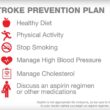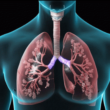Future of Stroke Care
A Better Future for Stroke Treatment: Examining Cutting-Edge Developments and Research
Stroke is still a major health concern because it is one of the main causes of disability and mortality. Nonetheless, there has been a period of fast and exciting progress in the field of stroke care. New research is opening doors for better stroke care, better recovery results, and possibly even better preventative measures. Here, we explore some of the most exciting areas of stroke care research as well as possible future paths.
Table of Contents

Extending the Therapy Horizon: Brain is Time
Future of Stroke Care
Moving promptly is one of the most important parts of stroke care. In the past, there was a restricted time frame within which clot-busting drugs could be administered. Research has, however, indicated the possibility of extending this window, providing optimism for better results.
- Next-Generation Clot-Thrombectomy technologies: These technologies maximize the advantages of time-sensitive therapies by providing quicker clot removal and shorter operation timeframes.
- Neuroprotectants and Combination Therapies: Researchers are looking into drugs that may preserve brain tissue following a stroke and improve recovery.
- Personalized Treatment Strategies: To maximize treatment success, new research focuses on customizing treatment based on patient characteristics and kind of stroke.
- Future Directions: The goal of research is to extend the time window for therapy, maybe up to more than 24 hours from the start of a stroke. Furthermore, there is great potential for the discovery of biomarkers to identify patients who might benefit from particular treatment modalities.
Minimally Invasive Techniques: Lowering Risks and Enhancing Recuperation
Future of Stroke Care
With more precision and shorter recovery times than open procedures, minimally invasive techniques are transforming the treatment of stroke patients. Here are a few areas that show promise:
- Endovascular Approaches: By treating restricted or blocked arteries with minimally invasive techniques like angioplasty and stenting, major surgeries are avoided.
- Treatments with gene therapy and stem cells: Researchers are looking into how gene therapy, which involves modifying genes to encourage nerve cell healing, and stem cell therapy, which uses damaged brain tissue to regenerate, might be used.
- Robotic-Assisted Surgery: By providing increased accuracy and dexterity during complex procedures, robotic surgical devices may yield better results.
Future Directions: To improve accuracy and decision-making during operations, minimally invasive techniques may need to be refined and integrated with artificial intelligence in the future of stroke care.
Precision Medicine: Tailoring Treatment to the Individual
Future of Stroke Care
Every person is affected differently by precision medicine: tailoring treatment to the individual stroke. The goal of precision medicine is to tailor care according to a patient’s unique circumstances, including genetics, type of stroke, and patient characteristics.
- Biomarkers and Genetic Analysis: A key component of personalized medicine is the use of biomarkers and genetic testing to identify individuals who are at high risk or who may respond better to particular treatments.
- Advanced Methods of Imaging: More focused therapies are made possible by the precise information about the site and extent of stroke that is provided by advanced brain imaging tools.
- Digital health tools: These include wearable technology and smartphone apps that can be used to measure recovery progress, keep an eye on vital signs, and customize rehabilitation plans.
- Prospective Courses: The fields of precision medicine research will concentrate on finding more pertinent biomarkers and creating sophisticated algorithms for individualized treatment regimens.
Future of Stroke Care Furthermore, combining artificial intelligence with stroke imaging could result in more precise diagnosis and tailored therapy advice.
Using Technology to Help Rehab After Stroke: Improved Support and Recovery
Future of Stroke Care
After a stroke, stroke rehabilitation is essential for increasing quality of life and restoring function. Technology is revolutionizing this field by providing cutting-edge instruments and assistance systems:
- Virtual reality (VR) and augmented reality (AR): VR and AR boost patient engagement and motivation by offering a dynamic and engaging environment for motor and cognitive rehabilitation.
- Brain-Computer Interfaces (BCIs): By enabling communication between the brain and assistive equipment, BCIs may help patients regain control over paralyzed limbs.
- Telemedicine and Remote Monitoring: Patients can obtain consultations and rehabilitation therapies from a distance via telemedicine, which improves accessibility and maintains continuity of care.
- Future Directions: It is probable that the smooth integration of these technologies into individualized treatment regimens will be a key component of stroke rehabilitation in the future. Furthermore, tremendous promise exists for recovery from developments in robotic exoskeletons and AI-driven rehabilitation applications.
In summary:
Future of Stroke Care
The field of stroke research has enormous potential. The use of cutting-edge technologies and extending treatment windows have improved recovery prospects for stroke patients, and some have even suggested stroke prevention techniques. With more studies to come, stroke survivors will have greater opportunities to rebuild their lives and a more promising future for stroke care.


